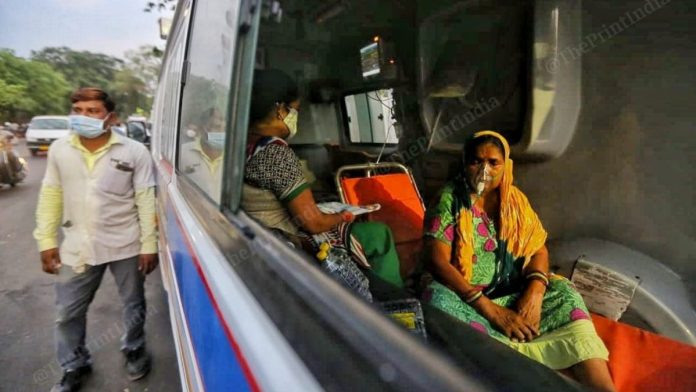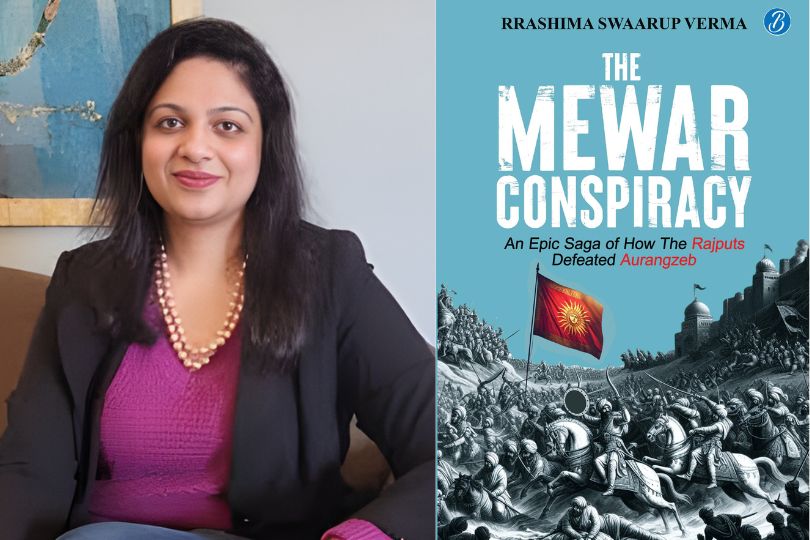Aerial cremation shots, Modi’s failure — how global media has covered India Covid crisis
Aerial cremation shots, Modi’s failure — how global media has covered India Covid crisison Apr 30, 2021

Aerial shots of cremation sites — showing pyres that are burning or the scorch marks they leave behind — have been used as the lowest common denominator, as headlines seek to draw attention to the mounting fatalities.
Through it all, in editorial and opinion pieces alike, PM Narendra Modi and his government have been the primary recipients of blame. They have been portrayed as the architects of an avoidable tragedy, with media outlets citing their decisions to go ahead with the Kumbh Mela and hold assembly election rallies where Covid prevention protocol often went for a toss. The latest of these is a cover story in the US-based Time magazine that has been written by the Indian journalist Rana Ayyub. Titled “How Modi Failed Us” and published Thursday, the article says Prime Minister Modi’s “strongman regime that has ignored all caution” is responsible for India’s lack of preparedness to tackle the second wave. She pointed out that Modi was late to urge “symbolic” participation in the Kumbh pilgrimage, adding that thousands died begging for medical aid as “our home minister and our Prime Minister looked the other way to continue campaigning”. A similar vein runs through reports and opinion pieces carried by other major media outlets such as The New York Times (US) and The Guardian (UK).‘Dying, dying, dying’
“As Covid-19 Devastates India, Deaths Go Undercounted” reads the headline of a report published by The New York Times last week. The report says there has been “a complete massacre of data”, noting how crematorium officials have cited “sickness” instead of Covid as the cause of some coronavirus deaths, and also flagging alleged undercounting by the government. “Fatalities have been overlooked or downplayed, understating the human toll of the country’s outbreak,” the article said.In an opinion piece titled “India’s Covid Catastrophe”, published in The Guardian, writer and political activist Arundhati Roy wrote, “We are witnessing a crime against humanity.”
“The precise numbers that make up India’s Covid graph are like the wall that was built in Ahmedabad to hide the slums Donald Trump would drive past on his way to the ‘Namaste Trump’ event that Modi hosted for him in February 2020. Grim as those numbers are, they give you a picture of the India-that-matters, but certainly not the India that is. In the India that is, people are expected to vote as Hindus, but die as disposables,” she wrote. An editorial in the UK-based media outlet last Friday blamed Modi’s “overconfidence” for the impact of the second wave. It faulted Modi for referring to India as the “world’s pharmacy” when less than 1 per cent of the population was vaccinated, and allowing return to pre-pandemic life. Likening Modi to Trump, it pointed out how an unmasked Modi didn’t give up campaigning even when the virus began killing thousands in India. The Australian carried an article this weekend that sought to highlight how “arrogance, hyper-nationalism, and bureaucratic incompetence have combined to create a crisis of epic proportions in India, with its crowd-loving PM basking while citizens suffocate”. The writer said the Centre’s “hubris”, “nationalist politics”, trailing vaccination drive, and “promotion of the economy over containment” led to the second Covid surge in India. The Indian High Commission in Australia subsequently issued a rejoinder to the report, originally published in The Times and written by Asia correspondent Philip Sherwell, and called it “baseless, malicious and slanderous”. However, the newspaper’s ‘World’ page Thursday was again dominated by the Covid crisis in India. Under the headline “Indians still dying, dying and dying’”, the correspondent highlighted how the national capital continues to run out of hospital beds, and is lacking adequate oxygen supply, essential drugs like remdesivir. The report credited volunteer groups for being more responsive than the government. It noted, “Where the government has failed, people have stepped in.”China takes shot at US aid
Last Friday, China’s Global Times published an opinion piece by editor-in-chief Hu Xijin that sought to raise questions about the US’ Covid assistance to India. Titled “US vaccine help to India too little, too late”, the article argues that the US is probably helping India just for a “publicity campaign” and to make this into another talking point about “Washington’s great compassion”. Slamming the US for what the author describes as delayed assistance, the article notes, “It is bizarre how belated and reluctant aid actions can be spoken about with excitement as if they are providing timely help.” On 24 April, the editorial board of the US-based The Washington Post said India’s new wave is as avoidable as it is tragic. The Covid surge, the article added, was the result of the government relaxing the restrictions a bit too early. Union Health Minister Harsh Vardhan, it said, even declared that the country had entered the “endgame” as early as March, when the second wave was underway. Permitting enormous religious gatherings such as the Kumbh Mela, politicians ignoring guidelines during election rallies and the second exodus of migrants increased the spread, the article said. An opinion piece in The Straits Times of Singapore said “politics has contributed to the mess”. Written by Associate Editor Ravi Velloor, it argued that an unmasked Modi, who addressed campaign rallies in several states, gave the wrong message to the people in letting their guard down. The article also questioned the effectiveness of Modi’s Cabinet discussions. “One of the questions from the Indian catastrophe that I have been puzzling over is what happens in Cabinet discussions led by Mr Modi. His minister for health is a qualified doctor and what’s more, chairs the World Health Organization’s executive board. Two of his Cabinet colleagues are distinguished retirees from the Indian Foreign Service who’ve spent entire careers focusing on the world outside,” it said. “The unfolding health disaster is a hybrid of a natural disaster compounded by complacency, misgovernance, and power play,” it added. In a 20 April NYT opinion piece, economist and epidemiologist Ramanan Laxminarayan said “complacency and lack of preparation by the government pushed the country into an unprecedented crisis”. Laxminarayan said things started changing dramatically after the Indian government and various policymakers “prematurely declared victory against the pandemic” when cases significantly dropped in mid-February. “The mass political, religious, and sporting events, which are extensively covered by the Indian media, sent mixed messages about the seriousness of the pandemic,” the article said. Source: theprint
Aerial cremation shots
Coronavirus
Covid patients
Covid-19
Frontlist
Frontlist India
Frontlist India news
Frontlist Latest
Frontlist Latest news
Frontlist Latest Update
Frontlist News
global media
India Covid crisis
Modi’s failure



.jpg)






.jpg)

.jpg)

.jpg)

.jpg)
.jpg)










Sorry! No comment found for this post.